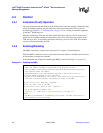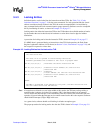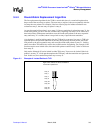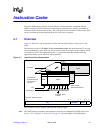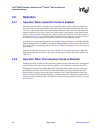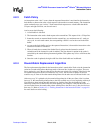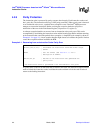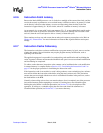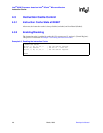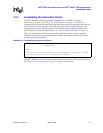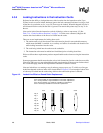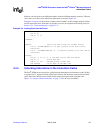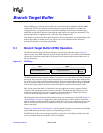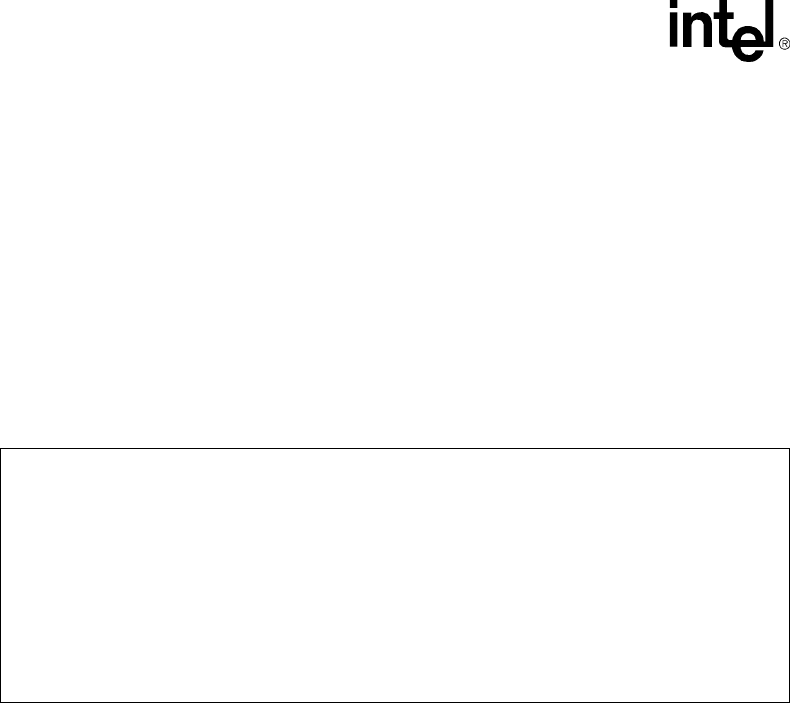
4-4 March, 2003 Developer’s Manual
Intel
®
80200 Processor based on Intel
®
XScale
™
Microarchitecture
Instruction Cache
4.2.5 Parity Protection
The instruction cache is protected by parity to ensure data integrity. Each instruction cache word
has 1 parity bit. (The instruction cache tag is NOT parity protected.) When a parity error is detected
on an instruction cache access, a prefetch abort exception occurs if the Intel
®
80200 processor
attempts to execute the instruction. Before servicing the exception, hardware will place a
notification of the error in the Fault Status Register (Coprocessor 15, register 5).
A software exception handler can recover from an instruction cache parity error. This can be
accomplished by invalidating the instruction cache and the branch target buffer and then returning
to the instruction that caused the prefetch abort exception. A simplified code example is shown in
Example 4-1 on page 4-4. A more complex handler might choose to invalidate the specific line that
caused the exception and then invalidate the BTB.
If a parity error occurs on an instruction that is locked in the cache, the software exception handler
needs to unlock the instruction cache, invalidate the cache and then re-lock the code in before it
returns to the faulting instruction.
Example 4-1. Recovering from an Instruction Cache Parity Error
; Prefetch abort handler
MCR P15,0,R0,C7,C5,0 ; Invalidate the instruction cache and branch target
; buffer
CPWAIT ; wait for effect (see Section 2.3.3 for a
; description of CPWAIT)
SUBS PC,R14,#4 ; Returns to the instruction that generated the
; parity error
; The Instruction Cache is guaranteed to be invalidated at this point



